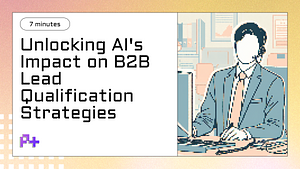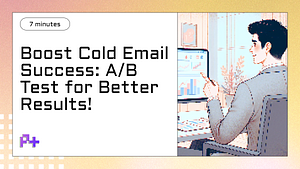1. Understanding the Importance of Effective Appointment Setting
Effective appointment setting is a crucial component of successful sales strategies, as it lays the groundwork for productive interactions between sales representatives and potential clients. When it comes to scheduling sales meetings, the phrase always confirm sales meetings twice encapsulates a best practice that can significantly enhance the likelihood of attendance and engagement. By confirming appointments, sales professionals not only demonstrate their commitment to the meeting but also reinforce the importance of the discussion. This proactive approach helps to reduce no-shows and ensures that both parties are prepared and motivated for the conversation ahead.
Moreover, confirming sales meetings twice serves to establish a more professional relationship with clients. It shows that you value their time and are serious about the opportunity to connect. The first confirmation can be sent shortly after the meeting is scheduled, while the second should be a reminder closer to the date of the appointment. This two-step confirmation process not only keeps the meeting top-of-mind for the client but also allows you to address any last-minute questions or concerns they may have. By incorporating this practice into your appointment-setting routine, you enhance your credibility and foster trust, which are essential elements for successful sales relationships.
In addition to boosting attendance rates and building rapport, effective appointment setting through double confirmations can lead to more productive meetings. When clients know that you are organized and attentive to details, they are more likely to come prepared with relevant questions and topics for discussion. This not only makes the meeting itself more valuable but can also increase the chances of closing a sale. Therefore, always confirming sales meetings twice is not just a logistical necessity; it is a strategic move that can drive better outcomes for both sales professionals and their clients.
2. Common Challenges in Appointment Scheduling
Appointment scheduling is a critical component of successful sales processes, yet it often presents several common challenges that sales professionals must navigate. One of the most significant challenges is the prevalence of no-shows. In a fast-paced business environment, potential clients may forget appointments or prioritize other commitments, leading to wasted time and effort for sales teams. To mitigate this issue, it is essential to always confirm sales meetings twice. A simple reminder can significantly enhance attendance rates and ensure that both parties are on the same page regarding the meetings purpose and agenda.
Another challenge in appointment scheduling is coordinating availability among multiple stakeholders. When meetings involve several participants, finding a suitable time that works for everyone can be daunting. This often leads to prolonged back-and-forth communication, which may further complicate scheduling. To streamline this process, consider using scheduling tools that allow participants to indicate their availability. Additionally, always confirm sales meetings twice to ensure that all parties are aligned, reducing the risk of last-minute cancellations or rescheduling.
Lastly, the lack of clarity around meeting objectives can hinder the effectiveness of sales appointments. When attendees do not have a clear understanding of the meetings purpose, they may come unprepared, leading to inefficient discussions. To address this challenge, it is crucial to set clear expectations in advance and provide agenda details during the scheduling process. By always confirming sales meetings twice, you reinforce the importance of preparation and ensure that all participants arrive ready to engage meaningfully. This approach not only enhances the quality of the meetings but also fosters a more professional image for your sales team.
3. Strategies for Streamlining Your Appointment Setting Process
Streamlining your appointment setting process is essential for maximizing productivity and ensuring that all stakeholders are on the same page. One effective strategy is to always confirm sales meetings twice. This simple yet powerful practice significantly reduces the likelihood of no-shows and miscommunication. By sending an initial confirmation shortly after scheduling the meeting, followed by a reminder closer to the date, you create a dependable system that reinforces commitment from both parties. This two-step confirmation process not only enhances accountability but also demonstrates professionalism, which can positively influence your prospects perceptions of your business.
Another useful approach is to leverage technology to automate parts of your appointment setting. Tools like calendar applications and scheduling software can be integrated with email reminders to ensure that confirmations and follow-ups are sent automatically. By doing this, you can save time and minimize errors associated with manual follow-ups, making it easier for your team to focus on closing deals rather than managing logistics. Consider using platforms that allow recipients to confirm or reschedule with a single click. This convenience can lead to higher confirmation rates and a smoother overall experience for both you and your clients.
Lastly, incorporating feedback loops into your appointment setting process can significantly enhance its efficiency. After each meeting, solicit feedback from your clients regarding the scheduling process. Ask them how easy it was to confirm their attendance and if the reminders were helpful. This information can provide valuable insights into how well your current strategies are working and where there might be room for improvement. By continuously refining your approach based on real user experiences, you can create a more streamlined and effective appointment setting process that not only meets but exceeds client expectations.
4. Personalizing Your Approach: Best Practices for Outreach
When it comes to outreach in sales, personalizing your approach can significantly enhance your chances of successfully securing meetings. One of the best practices is to tailor your communication to the specific needs and interests of your potential clients. This means doing your homework; understanding their industry, challenges, and goals allows you to craft messages that resonate. By incorporating relevant insights or mentioning mutual connections, you can create a sense of familiarity and trust. Remember, a personalized outreach strategy not only increases the likelihood of a positive response but also sets the stage for a more meaningful conversation.
Moreover, timing is crucial in the outreach process. After sending your initial email or message, its essential to follow up effectively. A best practice here is to always confirm sales meetings twice. This means reaching out to your prospect a few days before the scheduled meeting to reaffirm their availability. This not only demonstrates your professionalism but also shows that you value their time. A simple, friendly reminder can go a long way in ensuring that both parties are prepared and committed, ultimately leading to a more productive discussion.
Finally, consider utilizing tools and analytics to streamline your outreach efforts. Personalization can be enhanced through the use of customer relationship management (CRM) systems that track interactions and preferences. This data enables you to refine your messaging further and schedule follow-ups efficiently. Additionally, analyzing the response rates of different approaches can inform your strategy, helping you identify what works best for your target audience. By combining a personalized outreach plan with effective follow-up strategies, such as always confirming sales meetings twice, you can build stronger relationships and increase your chances of closing deals.
5. Overcoming Objections and Boosting Conversion Rates
Overcoming objections is a crucial aspect of the sales process that can significantly impact conversion rates. When potential clients express hesitations, it’s essential to address these concerns head-on. One effective strategy is to always confirm sales meetings twice, ensuring that both parties are on the same page regarding the agenda and expectations. This proactive approach not only reinforces your commitment but also provides an opportunity to identify and tackle any objections before they arise, thereby enhancing the overall effectiveness of your sales pitch.
During the confirmation process, take the time to engage with the client about their specific needs and potential reservations. Ask open-ended questions that allow them to express any doubts they may have. This not only demonstrates your attentiveness but also gives you valuable insight into their mindset. By understanding their objections, you can tailor your presentation to address these concerns directly, making your offer more appealing. Additionally, confirming meetings twice allows you to clarify any misconceptions and emphasize the value your product or service brings, ultimately leading to higher conversion rates.
Moreover, following up after the initial meeting confirmation can further solidify the relationship and build trust. Send a brief message reiterating the key points discussed and how your solutions align with their needs. This reinforces your professionalism and reliability, showing that you are dedicated to providing a seamless experience. Remember, overcoming objections is not just about addressing concerns; it’s about building rapport and confidence. By consistently employing the strategy of always confirming sales meetings twice, you create a more structured and effective sales process, ultimately leading to improved conversion rates and satisfied clients.



